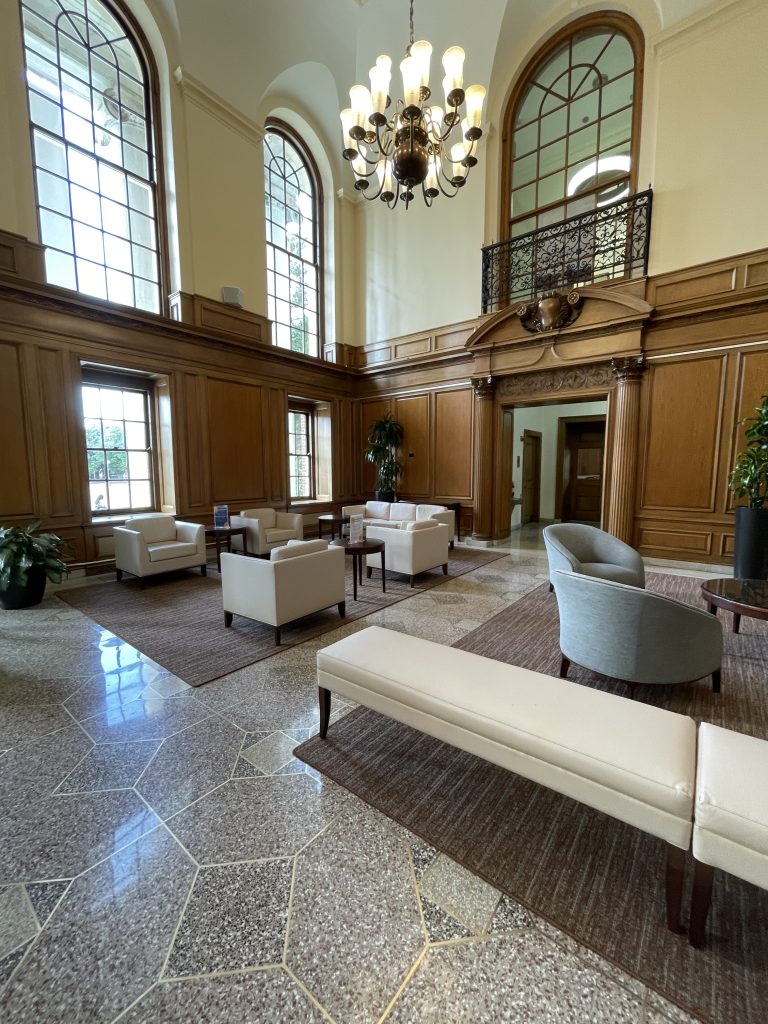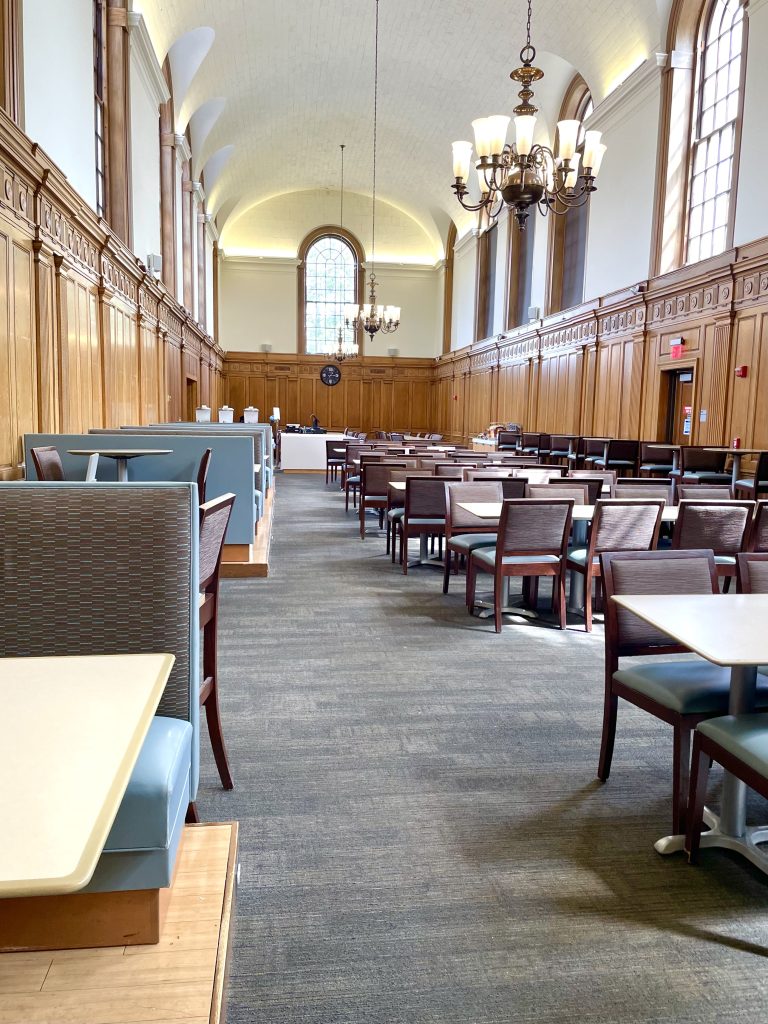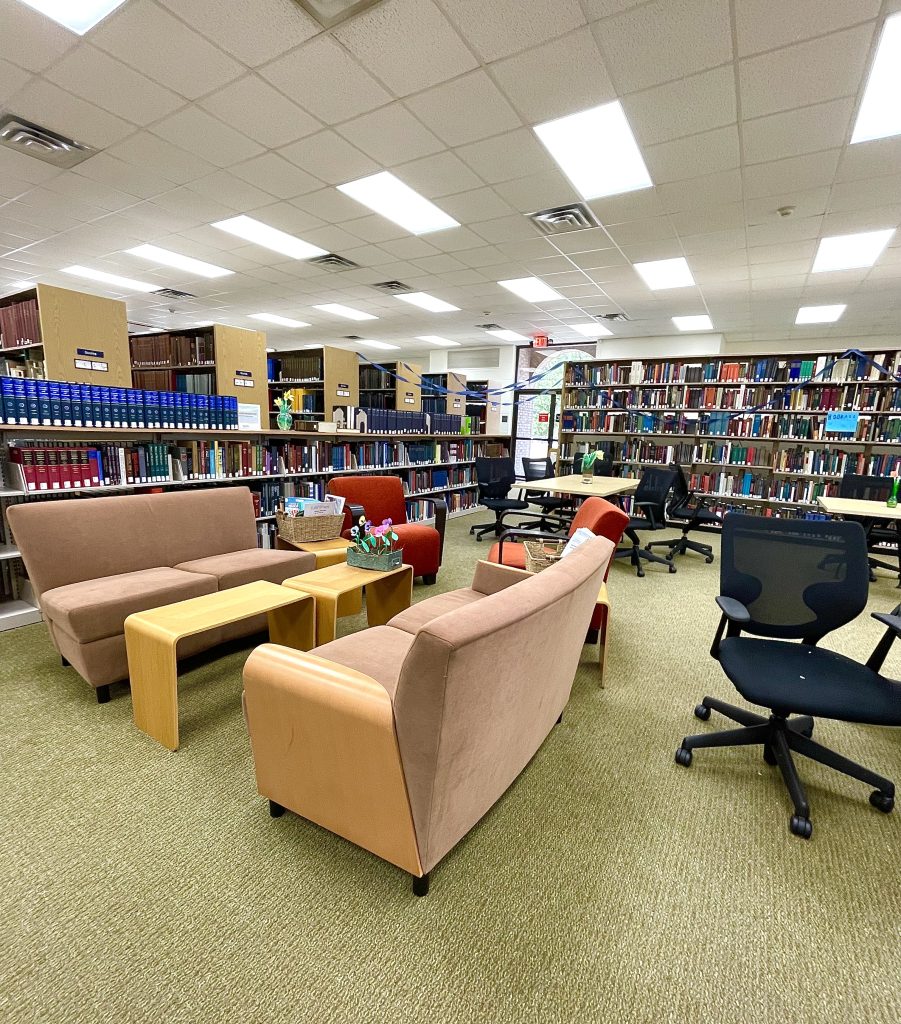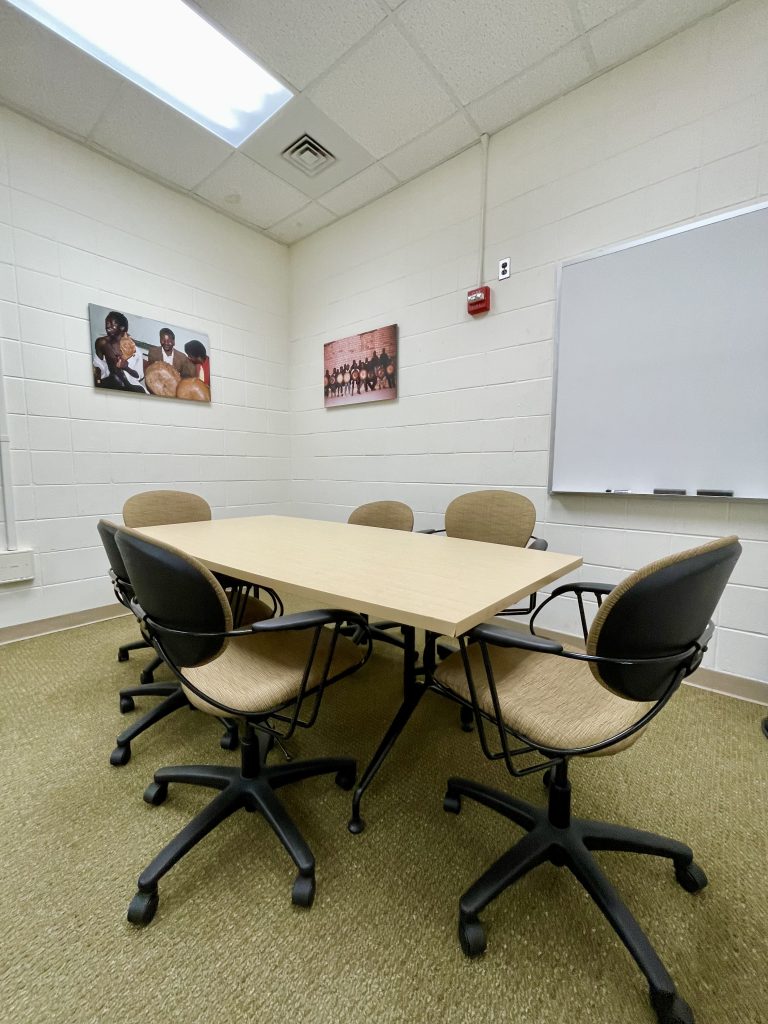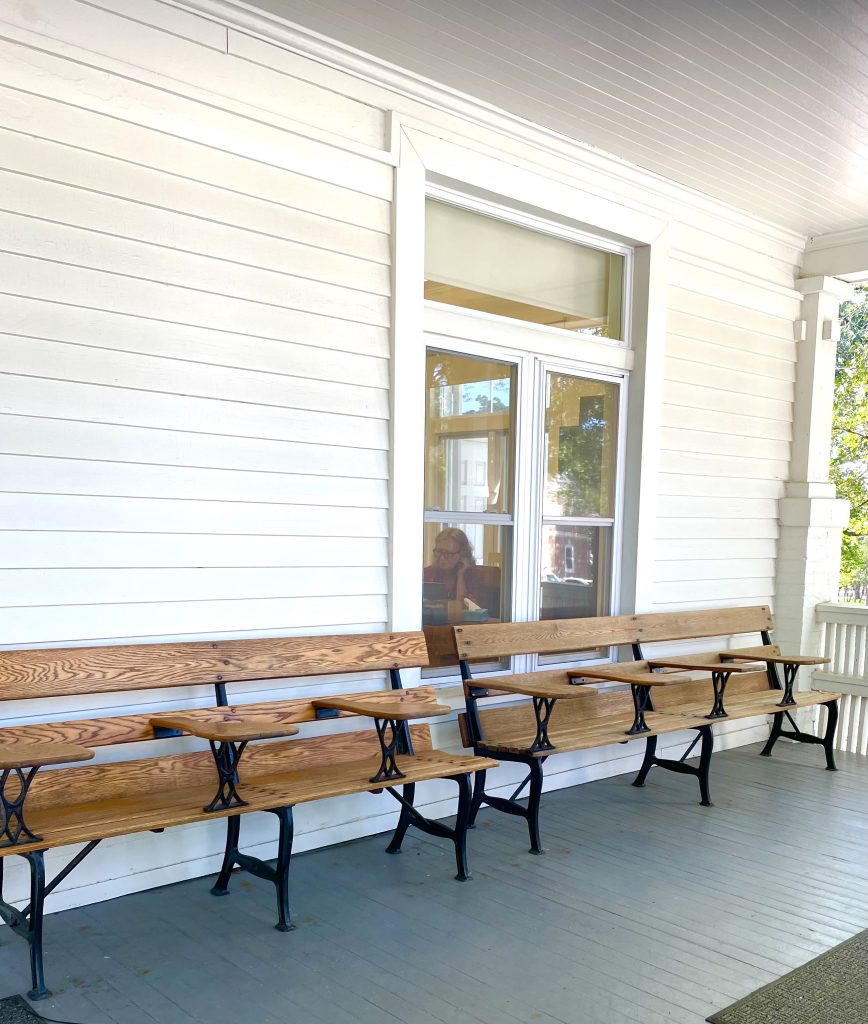
When Delaney (Thompson) Ortiz was a first-year student at Duke years ago, she could see Lilly Library from her dorm room in Gilbert-Addoms. Now she’s the Engineer of Record on the Lilly renovation and expansion project, helping to oversee the transformation of one East Campus’s oldest and most architecturally significant buildings.
On a recent spring day, Ortiz E’18 was leading a group of undergrads from the Pratt School of Engineering on a tour of the Lilly construction site. The students belonged to the Duke chapter of the American Society of Civil Engineers. One of them, Sarah Willman E’26, a Duke junior and civil engineering major, had reached out to Ortiz to set up the site visit. For the students, it was a unique opportunity to put their hard hats on and get a firsthand look at a historical building renovation in progress, and to learn about the challenges of designing a modern steel-and-glass addition connected to a century-old Georgian brick edifice.
But it also turned out to be an object lesson in what a Duke education prepares you for in life.

Ortiz is a Senior Project Engineer for Lynch Mykins, one of the largest women-owned structural engineering firms in the country. When her company won the bid to work on Lilly in 2019, Ortiz angled for a spot on the team. But she was still a recently graduated intern and was told she needed to wait until she had more experience and education.
Then came the COVID-19 pandemic, which ground everything to a halt and forced a pause on the Lilly project for two years. That was bad luck for Duke, but good for Ortiz. By the time the project pause was lifted, she had earned a master’s degree from Virginia Tech, was a licensed engineer with a few major projects under her belt, and was given a second shot at the opportunity she thought she’d missed.
“Duke taught me what civil engineering was,” she said. “It taught me what a beam and column were and how to do all of my basic math. So coming back to campus and giving back to the place that built me has been like a dream come true.”
The students had lots of questions for her. Did she spend much time in Lilly when she was an undergrad?
“No, but mostly because I was an engineering student,” she said. “I needed to be able to spread out at a big table and work through homework problems with my friends. We needed the kind of collaborative space Lilly didn’t have then, but that we’re adding to it now.”
Nods all around, especially from the upperclassmen who remember studying in Lilly before it closed.

“There was only one group study in the basement,” said one. “It was decent, but kind of creepy.” (Granted, even some library staff felt creeped out down there.)
“The reading room was the best place for socializing, but that was technically the quiet area,” said another student. “The areas where they wanted you to talk weren’t good for talking, and the areas where you ran into friends, that’s where you were supposed to be silent.” (The new and improved Lilly will feature a mix of quiet and conversational areas, just like Perkins, Bostock, and Rubenstein libraries on West Campus.)
The group ascended a scaffolding in one of Lilly’s lofty reading rooms, emerging onto a plywood platform erected within arm’s reach of the ceiling. “Nobody does work like this anymore,” said Ortiz, encouraging the students to touch the ornate plaster moldings. “A hundred-year-old building has a story to tell, and we’re finding out more of that story every step of the way.”

That turned the conversation to the craftsmanship of historical buildings, and the importance with a job like this of understanding how things were constructed a long time ago.
“Is that stuff you learned in class, or on the job?” asked one student.
“Most of it is on the job, going through the old drawings. But I’m also lucky that I’ve got co-workers who have been practicing for thirty, forty years, who have worked on similar projects and can tell you how things used to be done. So I’ve been able to leverage all my mentors around me at work.”
Later, after the site visit was over, Ortiz brought up on a screen the library’s original blueprints to show the students. Compared with the meticulous, as-built AutoCAD drawings that are industry standard today, the faded, hand-drawn documents seemed like the equivalent of a sketch on the back of an envelope.

“This is twenty-seven pages, which is all the original architectural drawings we have for the whole building,” said Ortiz. “Only about twelve of those are relevant for structural engineers. We go into a lot more detail now than they used to then. But most of the old drawings are still reliable and useful.”
How does Ortiz think her Duke education compares with that of someone who went through a more traditional engineering program, asks someone.
“People don’t tend to think of Duke as a civil engineering school,” said Ortiz. “But it’s actually a really great program. I think it helps that we’re well-rounded, because of the Trinity classes we’re required to take. We come out with a more holistic perspective on engineering, and with more soft skills. So much of engineering is about interacting with architects, interacting with clients, solving problems. You have to be able to talk to people. Honestly, that’s one of my favorite parts of the job. Every construction project involves hundreds of stakeholders you need to communicate with, whether it’s the owner or the architect or the people out on the job site. That’s definitely something my Duke education helps with.”

Any advice for a roomful of future Duke engineers who are going to be out on their own job sites soon?
“Ask every question that pops into your head. You might sound a little stupid, but a good boss will never make you feel that way. They will just explain it, and an even better boss will explain why and where you can find the information for yourself next time. Just keep asking questions until you get to the root of it. That’s really how you’re going to get better.”
What about Ortiz herself? Anything this Engineer of Record still wants to learn or get better at?
After a pause to think, she replies, “I want to get better at teaching. I can understand what I’m doing in the sense that my math is right, and the building is safe. But being able to translate your knowledge in a way that people can go forth and do it on their own, that’s true understanding.”
More appreciative nods. There are classrooms everywhere, if you know where to look. Even a big hole excavated behind an old library will do. After all, a Duke education is the collective work of many instructive individuals. Some of them even come back to share what they’ve learned with the next generation.























